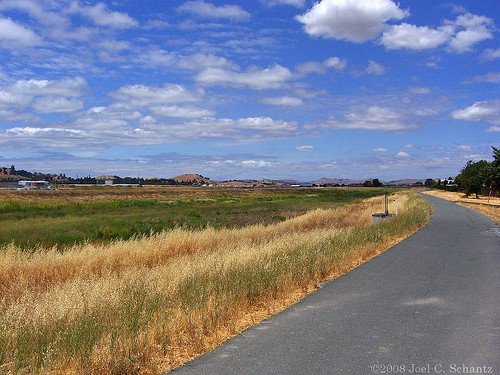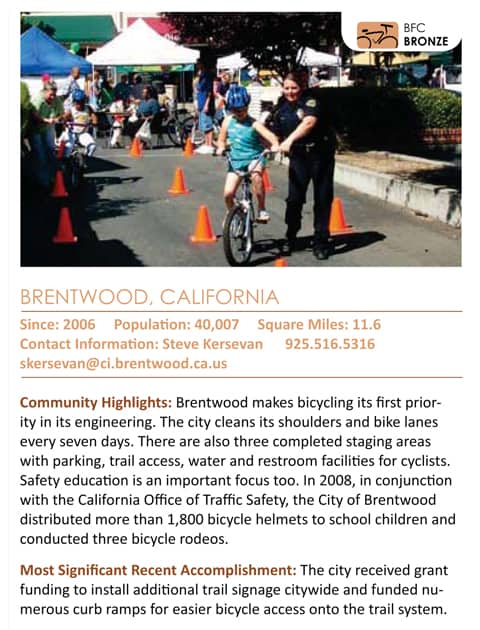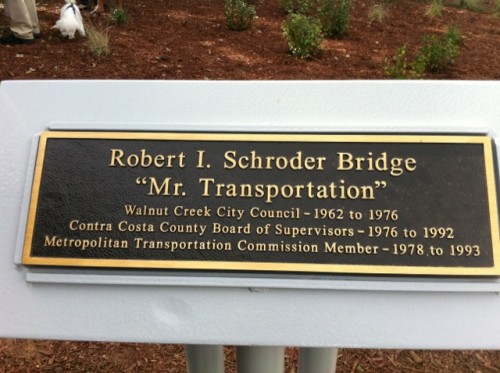 Fortunately, if your bike lives in Contra Costa County, it probably didn’t have a winter quite this bad.
Fortunately, if your bike lives in Contra Costa County, it probably didn’t have a winter quite this bad.
But if a family of spiders made their home between your handlebars, these four simple tips from the San Francisco Bicycle Coalition will get your ride ready for Bike to Work Day this Thursday.
Pump the tires
“Putting air in the tires is number one,” says Dan Thomases, the chief bike doctor at Box Dog Bikes. “Over the course of a year air escapes slowly and tires will go entirely flat; but that does not mean they won’t hold air – just re-inflate the tire before you check for leaks. If you don’t have a hand pump, I would recommend going to your local bike shop and ask them to help you inflate your tires.”
If you don’t have a hand pump and you’re heading for the gas station with your bike in the trunk, keep in mind that bicycle tires have one of two types of valve stems, either Schrader and Presta. Presta valves are thinner than Schrader valves and have a locking nut on the valve stem. If you have a bicycle with a Presta valve stem, you won’t be ready for the automobile tire air coupler: and may need an adapter.
Zack Stender, chief of the wheel-smith mechanics at Mike’s Bikes, adds that you can check the recommended pressure range, as it’s printed on the side of the tires, so you can make sure you pump in the right amount of air. A properly inflated tire is easier to ride on and more resilient to flats and other damage. “Gas station pumps only go up to about 40 PSI, and a mountain bike tire needs from 40 to 65 PSI, while a road bike needs up to 110 PSI. ”
Adjust the seat
It’s important for comfort. If you are riding into work the first time you want to adjust the seat height. Set your seat so that your leg is almost completely straight when you are sitting on the seat and then fine tune the height so that you still have a slight bend in your knee when you are at the bottom of your stroke.
Clean the chains
“It’s best to use a dry, clean rag to take off all the dust and dirt and cat hair. Do not use WD-40 on chains, it’s a de-greaser and will actually take off all your lubricant faster than burning man, “ says Dan. Zack says, “If your bike has been sitting for a couple of months, you’ll want to lube it with a bike oil like Tri-Flow. Any local bike shop will have a good brand of bike chain oil.”
Test the brakes
“You’ll also want to check your brakes by squeezing them hard and rocking the bike back and forth to ensure the brakes can stop the bicycle. Next, take a slow test ride around the block and if you can stop, you’re good to bike to work,” adds Zack. If you’re bike has been in storage for a while, the rubber may have hardened over time and the brake pads may need replacing.
And one tip from 511CC – Have Fun
Don’t get lost, take lots of pictures, and have fun out there!
 Happy Bike Month, everyone!
Happy Bike Month, everyone! Someone figured out that larger front wheels offered a better return on your effort, and cartoonishly large front wheels came into vogue. One of these bikes cost an average of six month’s pay, but they were popular nonetheless. Riders purchased bikes with front wheels as large as their legs would allow.
Someone figured out that larger front wheels offered a better return on your effort, and cartoonishly large front wheels came into vogue. One of these bikes cost an average of six month’s pay, but they were popular nonetheless. Riders purchased bikes with front wheels as large as their legs would allow.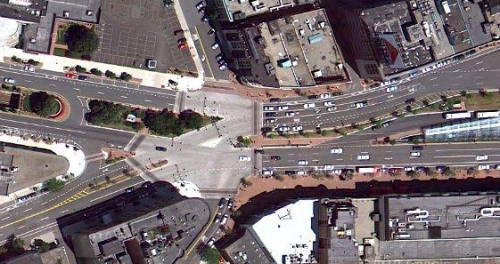

 Bike to Work Day may seem far off in May, but don’t wait until then to get ready. Daylight Savings Time is almost here, so dust off that old 10 speed. Here are some tips to get you going.
Bike to Work Day may seem far off in May, but don’t wait until then to get ready. Daylight Savings Time is almost here, so dust off that old 10 speed. Here are some tips to get you going.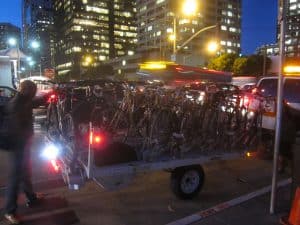

 One gains a unique vantage point sitting on top of a bicycle. Without all the metal and extra seats of a car, riding a bike immerses us in our surroundings, but with more speed and maneuverability than traveling by foot. Sometimes, it can be scary (“that pothole is huge!”), but it can also be humanizing. Other folks on the road tend to treat you like a person, rather than how they personify your vehicle’s make and model (a Hummer versus a Prius, for example).
One gains a unique vantage point sitting on top of a bicycle. Without all the metal and extra seats of a car, riding a bike immerses us in our surroundings, but with more speed and maneuverability than traveling by foot. Sometimes, it can be scary (“that pothole is huge!”), but it can also be humanizing. Other folks on the road tend to treat you like a person, rather than how they personify your vehicle’s make and model (a Hummer versus a Prius, for example).
 Do you know someone in your community who is committed to making every day a “Bike to Work Day”? Does this person epitomize and actualize the health, environmental, social and economic benefits of bicycling? The Bike Commuter of the Year inspires merely by telling others about their commute, offering encouraging words and advice to novice riders.
Do you know someone in your community who is committed to making every day a “Bike to Work Day”? Does this person epitomize and actualize the health, environmental, social and economic benefits of bicycling? The Bike Commuter of the Year inspires merely by telling others about their commute, offering encouraging words and advice to novice riders.


 The City of Pleasant Hill will host the second public meeting on its citywide Bike/Ped Master Plan project next Tuesday (January 11th) between 6pm and 8pm. Meeting location: at the City Hall Large Community Room. The draft list of recommended bicycle and pedestrian projects will be presented. Meeting materials will posted on the project website (
The City of Pleasant Hill will host the second public meeting on its citywide Bike/Ped Master Plan project next Tuesday (January 11th) between 6pm and 8pm. Meeting location: at the City Hall Large Community Room. The draft list of recommended bicycle and pedestrian projects will be presented. Meeting materials will posted on the project website (

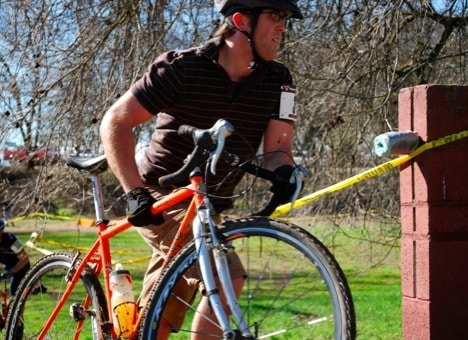

 Sat Jan 22, 10am to 6pm:
Sat Jan 22, 10am to 6pm:


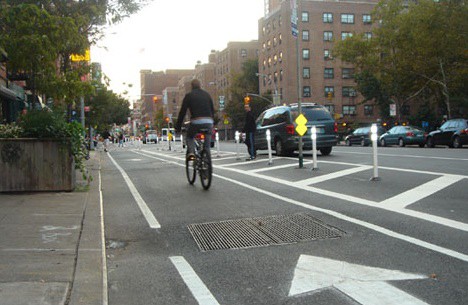
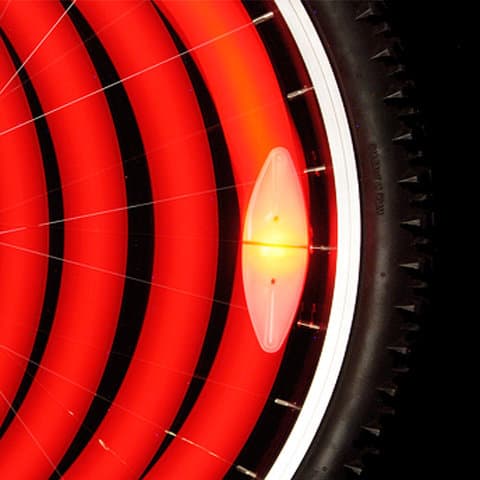
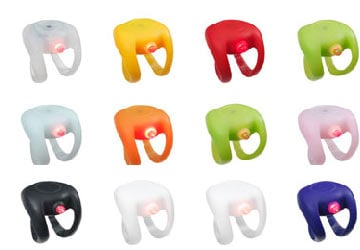
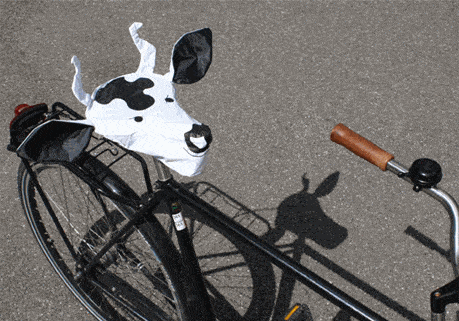

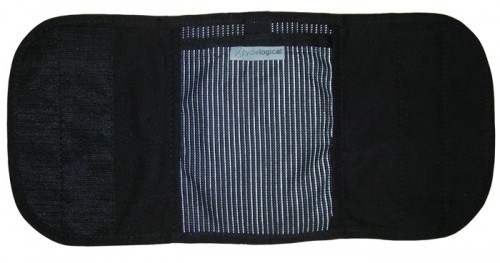

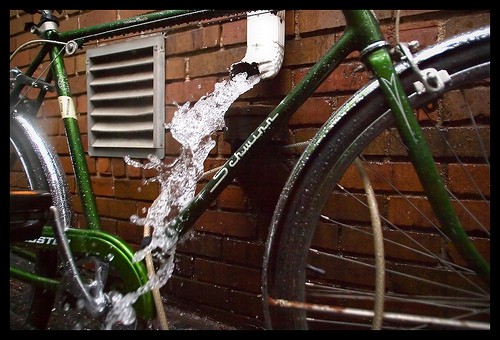


 Bay Area & California News
Bay Area & California News